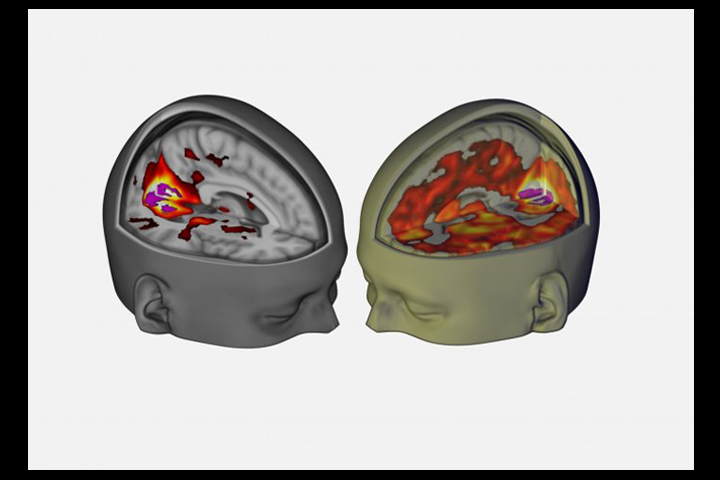Scientists in the United Kingdom have figured out what goes on in the brain of someone using LSD.

LSD — lysergic acid diethylamide — is a psychedelic drug that is known to alter the thinking process and cause hallucinations. But the mechanics weren’t understood. Why do people report feeling as one with the universe? Why do they hallucinate so vividly?
READ MORE: Canadian-based researcher to share ‘Nobel of neuroscience’ Brain Prize
Researchers from Imperial College London wanted to get a glimpse inside the minds of people who take the drug, so they enlisted 20 volunteers and used functional magnetic resonance imaging (fMRI) to see the processes in the brain after they took it. This was the first study of its kind.
And what they’ve discovered is pretty interesting.
For one, normally — when not on LSD — the information we see is processed in the visual cortex, at the back of the brain. However, the researchers found that in the volunteers, many other areas of the brain were involved in the processing of visual information. This occurred even when the volunteers’ eyes were closed.
The researchers also studied what happened when people reported a change in consciousness.
Usually, our brains function as a set of independent processes that work together. But in the case of the LSD users, the fMRI showed that the brain begins to function as a more cohesive unit.
“Our results suggest that this effect underlies the profound altered state of consciousness that people often describe during an LSD experience. It is also related to what people sometimes call “ego-dissolution,” which means the normal sense of self is broken down and replaced by a sense of reconnection with themselves, others and the natural world,” said Robin Carhart-Harris, from the Department of Medicine at Imperial, who led the research.
“This experience is sometimes framed in a religious or spiritual way — and seems to be associated with improvements in well-being after the drug’s effects have subsided.”
Another interesting finding was that, when the volunteers closed their eyes and listened to music, they reported more complex visions, including scenes from their lives.
The brain scan showed the reason for this: a part of the brain called the parahippocampus — which is involved in personal and mental imagery — communicated more with the visual cortex when the volunteers listened to music.
The researchers hope that their findings could help determine — and combat — instances when certain ideas and patterns become entrenched in our brains in those suffering from depression or addiction.
The study was published in the Proceedings of the National Academy of Sciences.



Comments